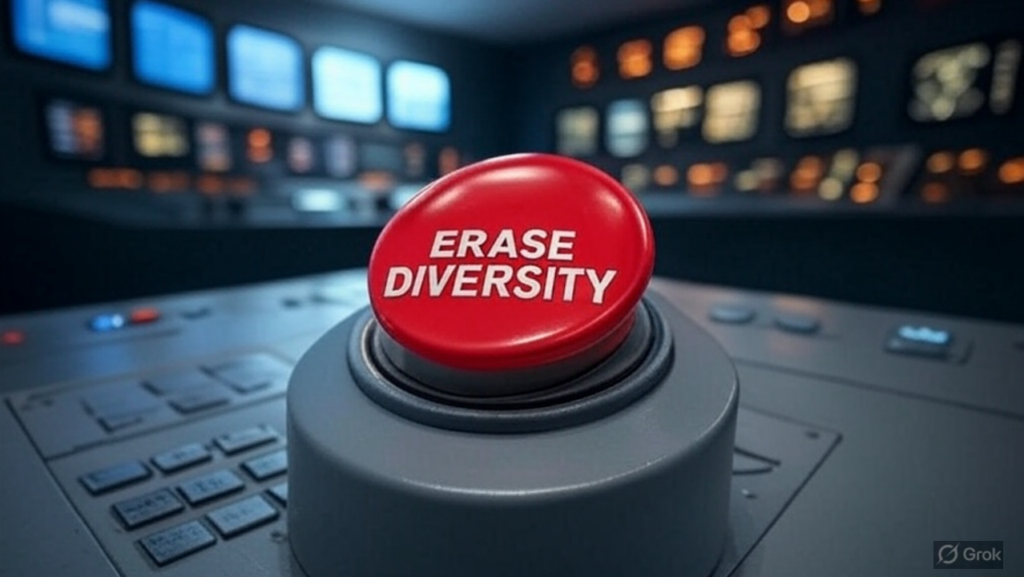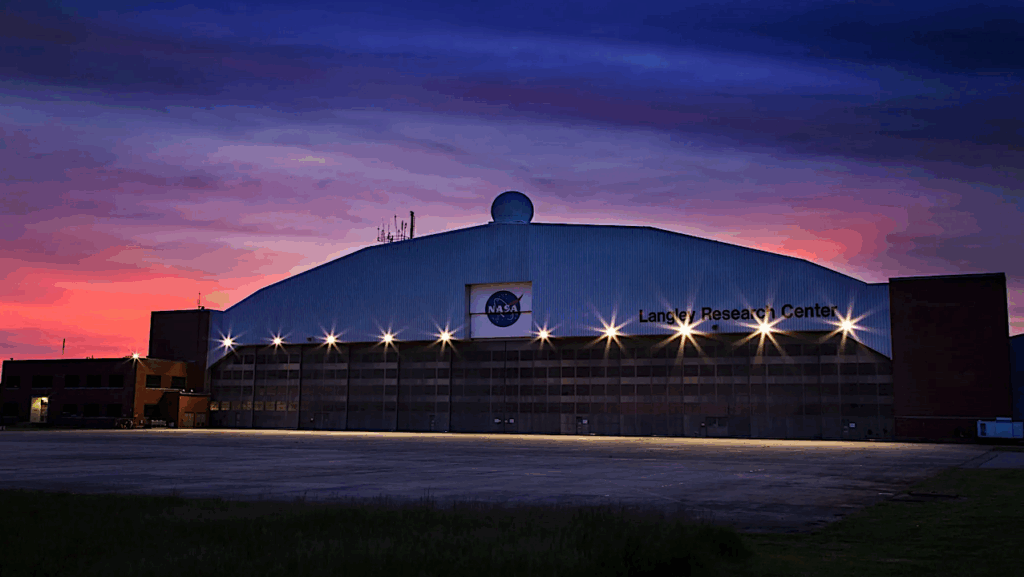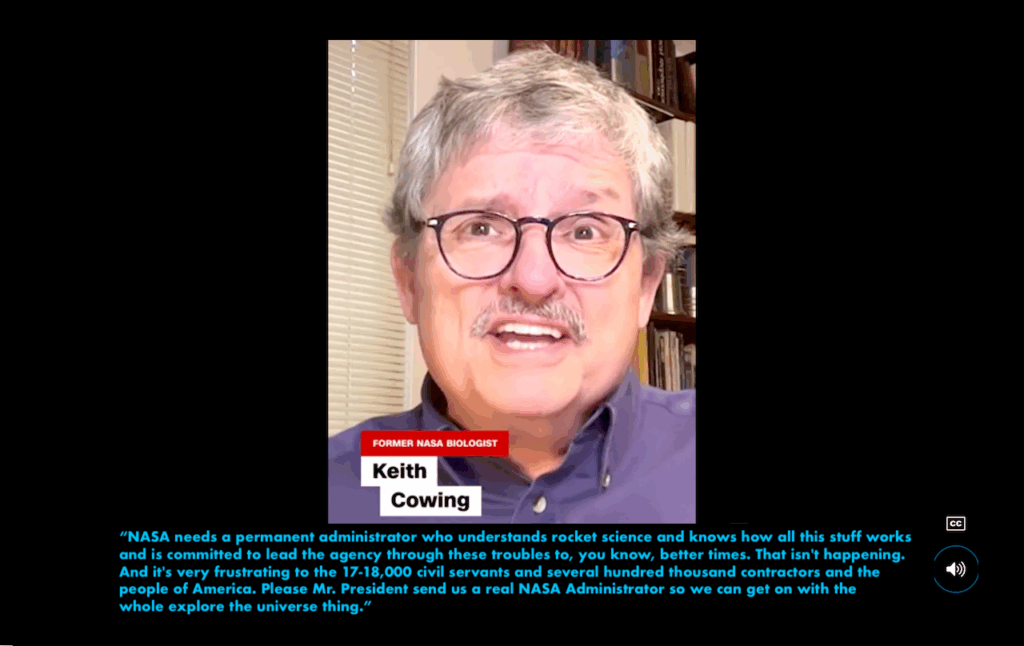AIAA And NASA Limit Access To News Events (Update)

 Keith’s 25 April further update: A recording of Monday’s Members-only AIAA telecon with NASA HEOMD AA Doug Loverro is now available for viewing here.
Keith’s 25 April further update: A recording of Monday’s Members-only AIAA telecon with NASA HEOMD AA Doug Loverro is now available for viewing here.
 Keith’s 21 April further update: While NASA PAO was ignoring my requests, AIAA was emailing Doug Loverro’s around to hundreds of people. Note that the AIAA guys says “We thank NASA for permitting the public distribution of this information”.
Keith’s 21 April further update: While NASA PAO was ignoring my requests, AIAA was emailing Doug Loverro’s around to hundreds of people. Note that the AIAA guys says “We thank NASA for permitting the public distribution of this information”.
From: Steve Sidorek
Sent: Tuesday, April 21, 2020 1:17 PM
Subject: [EXTERNAL] Doug Loverro Webinar Slides
Greetings,
The slide deck that Doug Loverro presented during yesterday’s webinar is attached. We thank NASA for permitting the public distribution of this information.
Regards,
Steve Sidorek
Director, Public Policy and Government Relations
Here are the slides: LOVERRO_LEO-Commercialization_AIAA.pdf
 Keith’s 21 April update: I have made several requests to NASA PAO for a copy of the presentation made by Doug Loverro. PAO has not replied to my requests. So I filed a FOIA request for the document. NASAWatch is not the only space news publication who was not offered access to this event. If this is how NASA PAO plans to roll out its new human exploration plans i.e. limiting access to the usual suspects inside the echo chamber – then its going to fall flat and not get the wider dissemination that it would otherwise get – and will so urgently need.
Keith’s 21 April update: I have made several requests to NASA PAO for a copy of the presentation made by Doug Loverro. PAO has not replied to my requests. So I filed a FOIA request for the document. NASAWatch is not the only space news publication who was not offered access to this event. If this is how NASA PAO plans to roll out its new human exploration plans i.e. limiting access to the usual suspects inside the echo chamber – then its going to fall flat and not get the wider dissemination that it would otherwise get – and will so urgently need.
Soon, people are going to start wondering why we need to do all of this expensive space stuff when tens of millions of people are suddenly out of work. If this tone deaf approach is how NASA is going to explain itself then it is going to have a hard time justifying all the money headed its way. Just sayin’.
 Keith’s 20 April note: NASA gave exclusive access to the HEOMD AA today on a webinar run by AIAA that was only offered “exclusively to AIAA members”. In other words you have to pay a fee for access. AIAA then hand-picked news media representatives to participate – but denied access to others. NASA PAO has not responded to my request for copies of the charts presented or any recordings made of the event. If NASA PAO is going to put senior officials up for public interactions where policy matters are discussed/unveiled then it behooves PAO to at least try to make certain that space media has equal access to these civil servants as they provide briefings in an official capacity. Blurry screengrabs of Powerpoint charts posted on Twitter just don’t cut it.
Keith’s 20 April note: NASA gave exclusive access to the HEOMD AA today on a webinar run by AIAA that was only offered “exclusively to AIAA members”. In other words you have to pay a fee for access. AIAA then hand-picked news media representatives to participate – but denied access to others. NASA PAO has not responded to my request for copies of the charts presented or any recordings made of the event. If NASA PAO is going to put senior officials up for public interactions where policy matters are discussed/unveiled then it behooves PAO to at least try to make certain that space media has equal access to these civil servants as they provide briefings in an official capacity. Blurry screengrabs of Powerpoint charts posted on Twitter just don’t cut it.
Looks like @NASA PAO is starting to play favorites when it comes to releasing #Artemis strategy via @AIAA seminar "exclusively to AIAA members". You have to pay a fee to join in order to participate. https://t.co/hOo08HDai6@BettinaInclan @DouglasLoverro @JimBridenstine #Artemis pic.twitter.com/dI2pYAsbSS
— NASA Watch (@NASAWatch) April 20, 2020
Loverro just introduced Alex McDonald who is now the ISS National Lab Program Executive, a position recommended by the recent independent review team. He's also NASA's Chief Economist.
— Marcia Smith (@SpcPlcyOnline) April 20, 2020
Here’s Marcia Smith’s summary of the event:
NASA Reorganizing To Sharpen LEO Commercialization Efforts, MacDonald to Oversee CASIS, SpacePolicy Online
“NASA is reorganizing its human spaceflight office to sharpen its efforts at commercializing low Earth orbit (LEO). NASA’s goal is to become only one of many customers using the International Space Station (ISS) and future LEO space facilities. The agency is moving out quickly to respond to a highly critical review of how non-NASA research is managed on the ISS, but acknowledges that it has work to do in convincing Congress that it has a viable plan. Doug Loverro, Associate Administrator for NASA’s Human Exploration and Operations Mission Directorate (HEOMD), spelled out NASA’s goals and plans for LEO commercialization in a webinar for the American Institute of Aeronautics and Astronautics (AIAA) today.”









Keith. I got a big chuckle out of your “head in the sand” picture. Pretty sure that’s me, although I’m not used to identifying myself from that perspective ? Glad you got the slides and apologies for you not being able to hear the brief. You and your readers are always welcome in my book.
I think Keith’s concern was that some important things were announced at a meeting (well, essentially a video conference) which wasn’t open to the public. I know the AIAA has some good reasons to members and people who pay them to attend those meetings. But when a presentation involves NASA policy issues, it might be best if copies of the presentation were also made available by NASA. In this case, it looks like Keith and other public sources got the slides second hand. If NASA’s PIO people could coordinate it, I think it would be better to put the material on a NASA web site at the same time it was presented to a private meeting.
fcrary — I hope you saw my response to this same concern posted yesterday in response to reader NewSpace Palentologist. And I shared last night with Keith a link to the video that you can now view without being a member. Thanks. Doug
Thanks. I did see your earlier comment, and after going the posted slides of your presentation, I feel a better. It looks like you did not present any new policy announcement at a private meeting. You explained and discussed new policies dating from the past few weeks or months. That’s not too different from the town hall meetings SMD usually has at scientific conferences like the AGU or the LPSC (also only open to people who paid to register for the conference.) Based on your comments, you understand that it’s important to get the information out, but also that’s important not to give “insiders” an advantage by giving them better information or giving it sooner than the everyone else. I understand how that can be a difficult balancing act, but it looks like you know and care about getting it right.
This is not as black and white as it seems. AIAA (and others) fund themselves by membership fees and conference fees. COVID-19 has caused reductions in both. Conferences are shut down. Some orgs are looking at RIF (maybe we need a new RIF Watch).
Professional societies are looking to member only events (such as this talk) and paid web based events to increase member interest (keep members) and to replace conference revenue. The challenge is, how do the societies get their revenue while bloggers put the material on their sites free? This may mean survival to smaller societies.
As Keith said, he provides a service publicizing the message. But, if AIAA did not exist (and have some form of revenue) he would not have a event bringing the message for him to repeat.
How do you balance the right to blog vs the right of societies to be paid for their efforts bringing forth the material?
Doug Loverro does not need AIAA to make a presentation on NASA’s HEOMD policy.
There are really two issues involved. First, an organization like the AIAA can certainly charge for membership, conference or meeting attendance and/or require membership to register for a meeting. I can and have complained about how much my own professional society (the AGU) charges for those things, but that’s between the members and the management. But the second issue is what forums a government agency should (or even can) use to announce important policy changes. The distribution of that sort of information is supposed to be public, not limited to dues-paying members of a particular organization. There could also be problems with giving advanced notice to members.
Thanks to all for your comments and perspectives on this topic. Just to fill in some of the missing pieces for you. The reason we ran this webinar was to replace a previously agreed to “in person” presentation at an AIAA event that was cancelled due to COVID-19.
I can’t speak for everyone in government, but for my part, I try to be fairly selective about when I agree to do events and limit those to non-profit, educational, and professional societies in general for all the reasons you all have pointed out. Often those are open to non-members, but sometimes they are not. Even the ones open to non-members often charge a fee.
But, as reader NewSpace Palentologist [sic] points out above, it is in NASA’s interest to help support these institutions because in the long term, that helps the nation and NASA as well. So, it’s always a balancing act.
I appreciate the need to provide access to everyone for what we are doing, and the way we try to do that is to utilize as many distribution means as we can get. AIAA provided us one added mechanism to get that done and we were able to reach directly over 500 folks who otherwise may not have tuned into the normal NASA distribution chain. In the end, I think that was a good trade. But, your concerns are indeed justified and we’ll try to balance the proportion of events so that we can make sure everyone gets the access they deserve.
Thanks to Keith for pointing out this blind spot for me so I can be more sensitive to it.
“If this is how NASA PAO plans to roll out its new human exploration plans i.e. limiting access to the usual suspects inside the echo chamber”
Out of my depth here as I live in the hinterlands: Can anything be said about what’s euphemistically called ‘old space’ and those regarded as PAO favorites? Is there anything in common?
I’m pretty sure there is some correlation between “old space” and “PAO favorites”. I’m not sure if there is any intentional bias involved, but people do communicate with people they know. For a meeting of the sort in question, the PAO folks invite media people who they know would be interested, distribute material to people they also know will be interested, etc. But they will be biased by their prior ideas of who will be interested. They contact people who they have been in previous contact with. If the “old space” people have been on their contact list for decades, and the “new space” people haven’t been for more than a couple years, then the result is obvious. Not intentional, but obvious.
There is, of course, also a natural bias towards getting favorable coverage. The PAO people are paid to create favorable coverage, and their annual reviews do depend on the favorable coverage they generate. So I think they would be naturally inclined to stay in contact with media sources who say nice things about their institution, and less inclined to keep in touch with media sources which are frequently critical.